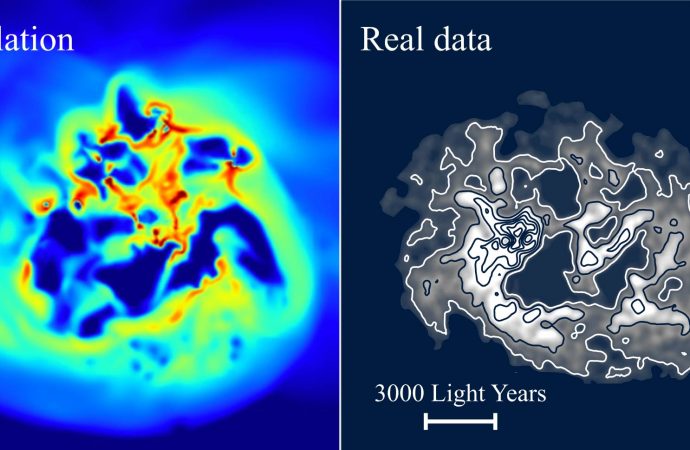An international team of astrophysicists from the University of Surrey, Carnegie Mellon University and ETH Zürich has found evidence that dark matter can be heated up and moved around, as a result of star formation in galaxies.
Dark matter is thought to make up most of the mass of the Universe. However since it doesn’t interact with light in the same way as normal matter, it can only be observed through its gravitational effects.
When stars form, strong winds can push gas and dust away from the heart of the galaxy. As a result, the galaxy’s center has less mass, which affects how much gravity is felt by the remaining dark matter.
With less gravitational attraction, the dark matter gains energy and migrates away from the center, an effect called ‘dark matter heating.’
In a new study, University of Surrey’s Professor Justin Read and colleagues set out to hunt for evidence for dark matter in nearby dwarf galaxies.
They measured the amount of dark matter at the centers of 16 dwarf galaxies with very different star formation histories.
They found that galaxies that stopped forming stars long ago had higher dark matter densities at their centers than those that are still forming stars today. This supports the theory that the older galaxies had less dark matter heating.
“We found a truly remarkable relationship between the amount of dark matter at the centers of these tiny dwarfs, and the amount of star formation they have experienced over their lives,” Professor Read said.
“The dark matter at the centers of the star-forming dwarfs appears to have been ‘heated up’ and pushed out.”
The findings provide a new constraint on dark matter models: dark matter must be able to form dwarf galaxies that exhibit a range of central densities, and those densities must relate to the amount of star formation.
“This study may be the ‘smoking gun’ evidence that takes us a step closer to understanding what dark matter is,” said study co-author Professor Matthew Walker, from Carnegie Mellon University.
“Our finding that it can be heated up and moved around helps to motivate searches for a dark matter particle.”
The results were published in the Monthly Notices of the Royal Astronomical Society.
Source: Sci News

































Leave a Comment
You must be logged in to post a comment.